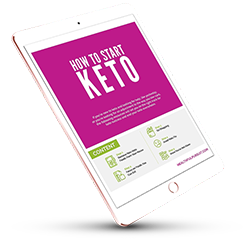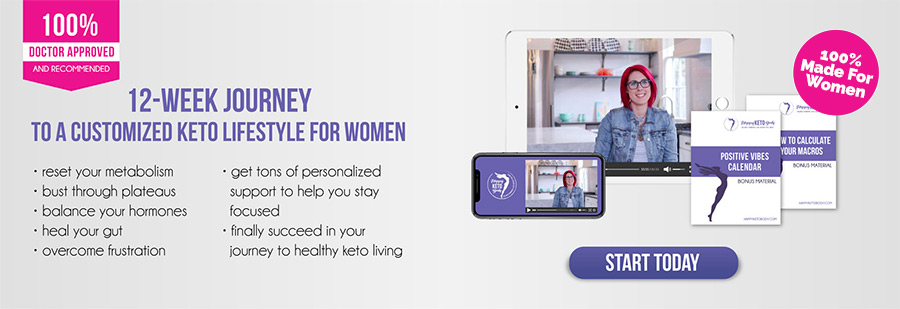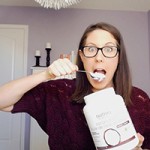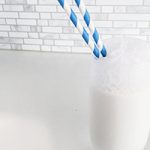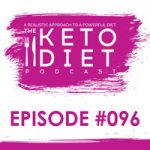I want...
My Secret to Bright, Smooth & Clear Skin (saying goodbye to imperfections)
August 15, 2019 By
Leanne Vogel

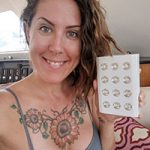 August 15, 2019
August 15, 2019
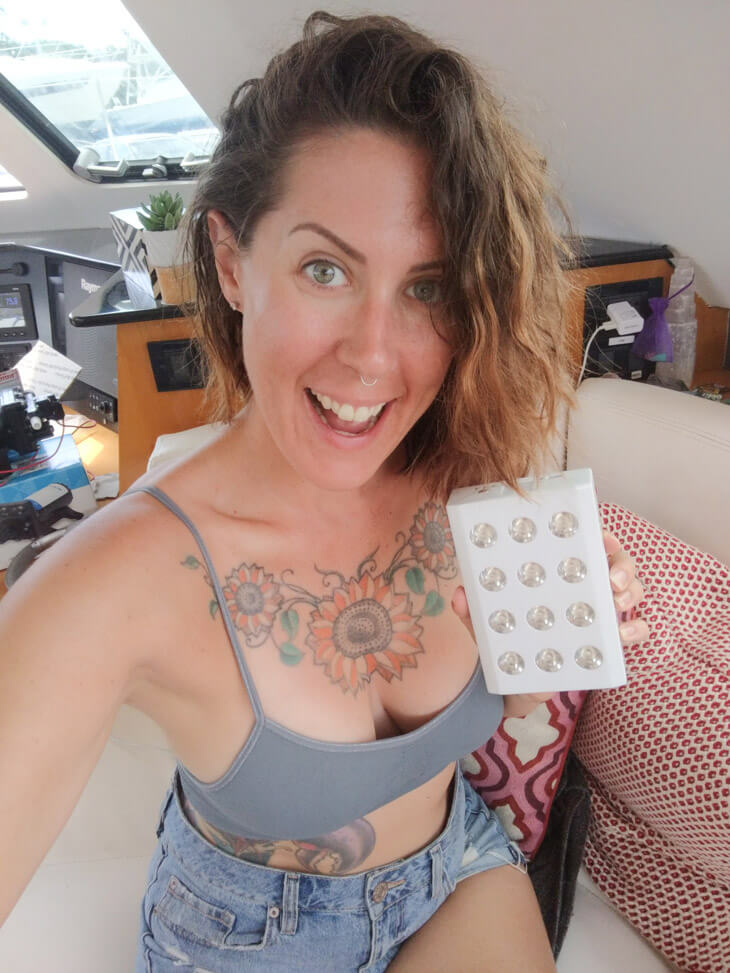
Many of you have been noticing just how clear my skin has been these last couple of weeks. Scars are vanishing, acne isn’t as bad, I’m brighter, and lighter, and you’re all asking, ‘what is your secret?!’… It’s red light. If you struggle with acne, check out this post, too!
Red light therapy is one of the most exciting health innovations in recent years, with quality devices producing a wide-range of benefits, like healthier skin, pain & inflammation relief, improved thyroid & hormone health, and better sleep.
Keto shopping lists, recipes, and more! Start keto with this FREE 5-step guide.
I'm ready!But with so many brands and types of devices now available, it can be hard to figure out which approach is best, and what you should buy. This post will help you sort out all the red light therapy brands out there, separate the legit from the not-so-legit, and pick the best device to optimize your health.
Where Did Red Light Therapy Come From?
In just the last 5 years, red light therapy devices have gone from being found only in a handful of spas and salons, to being widely available to consumers for in-home, personal use. It’s become very popular with natural health experts, skincare professionals, and personal trainers & pro athletes who use it for workouts & recovery. For many people, light therapy results speak for themselves.
The science and technology behind red light therapy has been around for decades though, and there’s a large base of peer-reviewed clinical research from all around the world that backs up the use of natural light treatments for all kinds of health conditions. By large base of research, I mean well over 1,000 peer-reviewed studies that have shown positive results, and identified no major side effects or risks. I’m including links to several studies in the health benefits section a bit further down.
So it’s not the science of light therapy that’s new. That’s actually way more established than most health products. The issue has been lack of access.
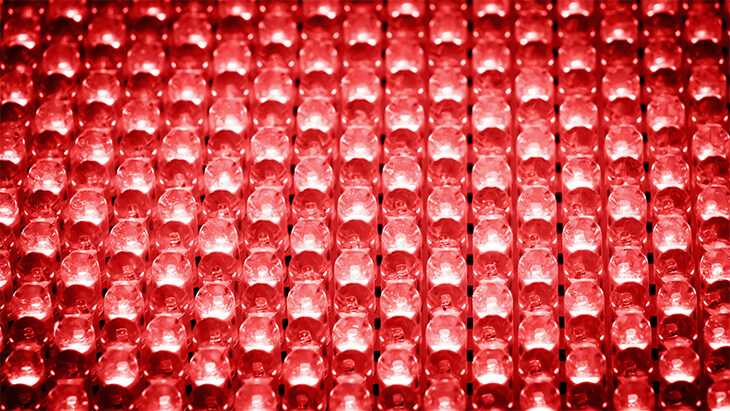
Basics of Light Therapy
The basic principle behind effective light therapy devices is to deliver wavelengths of natural light to your skin and cells.
Like food and water, our bodies need natural light every day to produce more energy that powers everything we do. Light therapy is such a big boost for so many people because most of us just don’t get enough natural light every day. When the mitochondria in our cells receive healthy wavelengths of light , it helps us run more efficiently, heal faster, and perform at a high level physically and cognitively.
Health Benefits of Light Therapy
These are some of the most well-studied and clinically documented natural health benefits of light therapy, including links to published, peer-reviewed studies:
Rejuvenated Skin: Red light therapy is becoming a huge skincare and anti-aging treatment because it’s been repeatedly found to reduce wrinkles and fine lines and other signs of aging, with clearer skin as a result 1 . Trials have even shown how light therapy helps middle-aged women look younger 2 , and how light therapy helps children recover from scars 3 .
Anti-Inflammatory: One of the big reasons natural light treatments improve your complexion is because light therapy has a natural anti-inflammatory effect 4 . This is also why light therapy helps reduce pain and improve healing outcomes in people recovering from surgery 5 .
Fitness & Muscle Recovery: Pro athletes and trainers are big on red light therapy because it improves fitness and physical performance when used with exercise 6 . This is true for men 7 and women 8 alike, and for people of all body types and fitness levels. Beyond improving performance, red light therapy also reduces post-exercise muscle fatigue 9 , and then helps people recover faster from those demanding workouts 10 . Researchers have seen these results across all types of people. Middle-aged and older women of all fitness levels have shown the same kind of improvement in their physical strength and muscle recovery 11 .
Relief from Pain and Strain: Light therapy is well-established as a way to limit pain and soreness 12 , without more drastic medications or invasive procedures. [12] Controlled trials have demonstrated very positive results for people treating rheumatoid arthritis 13 , hand osteoarthritis 14 , and knee osteoarthritis 15 .
Restful Sleep: Unlike artificial blue light, light therapy helps your body produce more of its own natural melatonin 16 , and has been shown to improve sleep quality and duration in people with severe sleep disorders from migraines 17 and traumatic brain injury 18 .
Hormone and Thyroid Health: Research on light therapy and hormone regulation is in an earlier stage, but there are already some pretty incredible results, like a study showing how light therapy significantly improved people’s thyroiditis 19 and helped people lower and even eliminate their need for levothyroxine meds.
That’s just a sample of the benefits and research behind light therapy. Natural light treatments have also shown great results for bone health 20 and osteoporosis 21 , cognitive and brain function 22 , eyes & vision, wound healing 23 , and even stroke recovery 26 .
Which Light Therapy Brand is Best?
Some brands like Joovv, Gembared, Platinum LED Therapy, and Red Therapy Co. sell LED devices that set up in your home in various ways. Others like LightStim, Trophy Skin, and QuasarMD sell much smaller devices intended for handheld use on a person’s face. Celluma puts similar technology into a wearable wrap. Other brands offer light therapy beds, similar in design to tanning beds.
Let’s look at what works best and why.
How to Find the Most Effective Light Therapy Device
The big change in access to light therapy came just a few years ago, when Joovv introduced their first personal red and near infrared light therapy devices. Joovv’s modular LED design has allowed people to put powerful red light therapy systems in their homes, like the ones medical researchers use. This has been a game changer that’s brought light therapy out of the dark, and into the mainstream.
But now that red light therapy has gotten so popular, there are also a lot of brands on the market, from Joovv’s devices, to a lot of imitators, and other types of products with different approaches to light therapy, which is also known as “photobiomodulation” in medical circles.
Light therapy can be confusing at first, because there’s so many different options out there, and devices vary widely on everything from price, to device size, to the wavelengths of light used, to treatment guidelines, and how the light is delivered.
Keep reading for a breakdown of the leading brands, and which features to prioritize in a new light therapy device.
If you’re thinking about buying a light therapy device for personal use, there are a few features to consider that make the biggest difference for how effective your treatments will be.
Get a Big Device with More Coverage
For the best light therapy results, go big! This is the simplest, and most important variable in light therapy. The consensus among medical professionals and independent diagnostic testing labs is that bigger, “full-body” light therapy is more powerful and effective than treating just a small part of your body.
The more your cells are exposed to natural light, the more energy your body can take in and use, and the more positive health effects you’re going to see. The translation is actually quite simple: larger light therapy devices perform better than smaller ones.
Even if you’re only trying to treat a specific area—like your face for healthier, clearer skin—you’ll see better results with a larger device. When our cells take in natural light and make energy, that energy is used across our body. A full-body treatment will typically have a greater effect on your facial skin than treating just your face alone.
A bigger device means better coverage. Better coverage means more energy for your body, for the best possible health results from light therapy. I’ll discuss this in more detail later, but one of the reasons I prefer Joovv’s products is because they’re modular, which allows you to start with a smaller device and build out a larger system over time.
Even though my preference is full-body light therapy, you can still get some good results in specific areas of your body with a powerful, targeted device. I’ll break down a number of these smaller devices later in the post.
Power is Important. So is Independent Verification.
The “power” factor tends to be most confusing for people starting light therapy. Most of us just aren’t that familiar with the scientific principles of light and energy, and how that translates to our light therapy treatments. These are the basics of light therapy power:
- More Power = Shorter Treatment Times: A more powerful device means less time you need to stand in front of a device.
- Total Energy is the Power Spec that Matters: Light therapy power is typically measured in irradiance or joules, but that measurement alone won’t tell you what you need to know. What’s most important is total energy, or how much energy your body actually absorbs.
To make things more complicated, a lot of light therapy brands make big marketing claims about the power of their devices, without being able to back that up with independent testing. I’m always going to trust an independent diagnostics laboratory over the claims of an advertisement at the top of my search results.
In general, larger devices are going to deliver more total energy to your body. Most cheap, smaller devices have NOT been tested independently, so you can’t really believe the numbers they throw around. Worse, most of these little devices aren’t actually clinical red light therapy devices, and haven’t been registered with the FDA. That means they don’t have to follow GMP (Good Manufacturing Practices), which gives you an idea of why they don’t verify their power measurements.
Takeaway: Don’t get hung up on irradiance or brands making big noise about their power with nothing to back it up. My advice is to look for brands that verify their power measurements with independent testing. If they don’t have independent measurements, it’s a really bad sign, and you just don’t know what you’re going to get when you buy.
Not All Light Therapy Devices are Effective
Most light therapy products are lacking in the size department and simply don’t have enough coverage and power to deliver clinically-relevant treatments. But there are a select few smaller, handheld devices that deliver good clinical results in targeted areas. Let’s separate the pretenders from the contenders.
The following brands make very small light therapy devices that offer only a little bit of coverage and power that’s unlikely to have larger systemic health effects.
LightStim and QuasarMD both make small, handheld devices that look sort of like space-age showerheads you hold up to your face during a treatment. Neither covers a very large area, so you’re meant to move the device around your face to cover more. They are both marketed primarily as cosmetic beauty products. LightStim has several versions with different colors of light for different skin concerns, and they’re all relatively cheap, with many under $200. QuasarMD sells their primary device for $399.
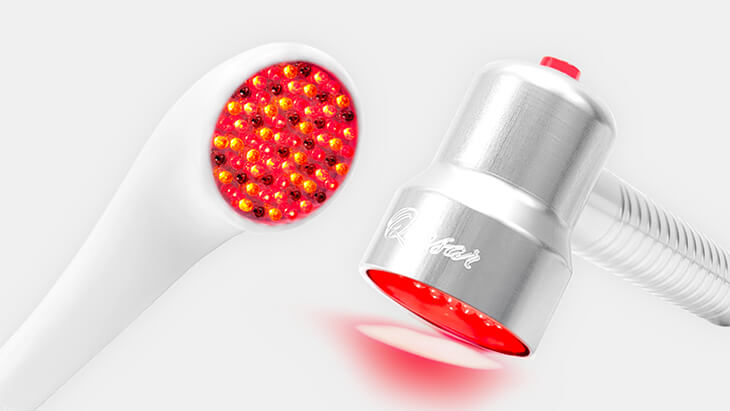
Trophy Skin also sells a light therapy device meant mainly for beauty treatments. Whereas LightStim and QuasarMD are more like wands, Trophy Skin’s RejuvaliteMD is a small, curved lamp.
These devices are on the cheapest end of light therapy because they’re small, under-powered and you need to use them for a very long time to receive any sort of benefit. Some of these targeted devices may be able to deliver some beauty results in specific areas, but if your goal is healthier skin, you’re going to do a lot better opting for a larger system or a more powerful targeted device.
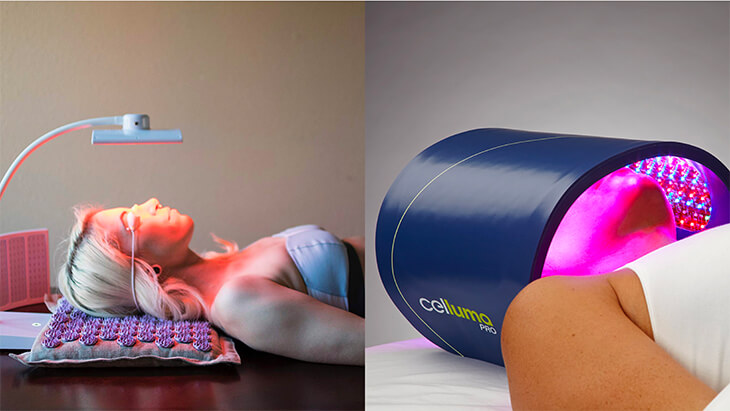
Celluma has a much different approach to delivering light therapy. They sell light belts and bands that actually wrap around the contours of your body, like a sore wrist or lower back. The wearable delivery method is pretty cool, but Celluma has the same limitations as the brands mentioned above: their devices are too small and don’t have enough coverage or power.
Celluma’s treatments aren’t covering enough of your body. It’s going to be hard to get larger energy and performance benefits, or serious inflammation relief across your body, if you’re only treating a wrist or other troublesome area.
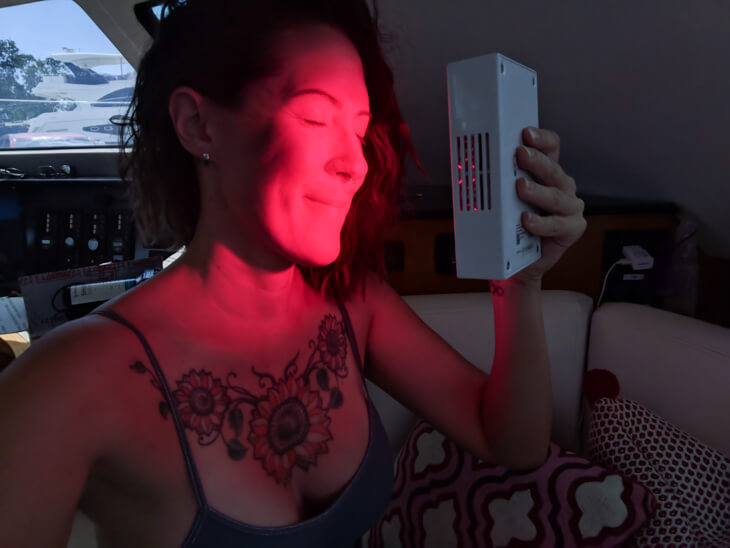
I Use a Joovv Go for Targeted Skin Treatments
Joovv is known for its larger, full-body devices, but now they also have a portable, handheld model called the Joovv Go. You can choose between red or near infrared light. I have the all-red Joovv Go, and I think this device is the class of the smaller, targeted light therapy products.
I’ve been using my Joovv Go for several months and am so impressed with the changes I’ve seen in this short time. I use it on my face to reduce fine lines, scaring, and the occurrence of acne.The device is cordless, rechargeable, and travels everywhere with me. Just 10 minutes a day and I glow from the inside out.
Morning or night, whenever I can find a few minutes, I turn on the Joovv Go and hold it a couple of inches from my face. The unit automatically shuts off after 10 minutes, and I go about my day. Easy as that! I’ve received countless comments on the changes my skin has improved.
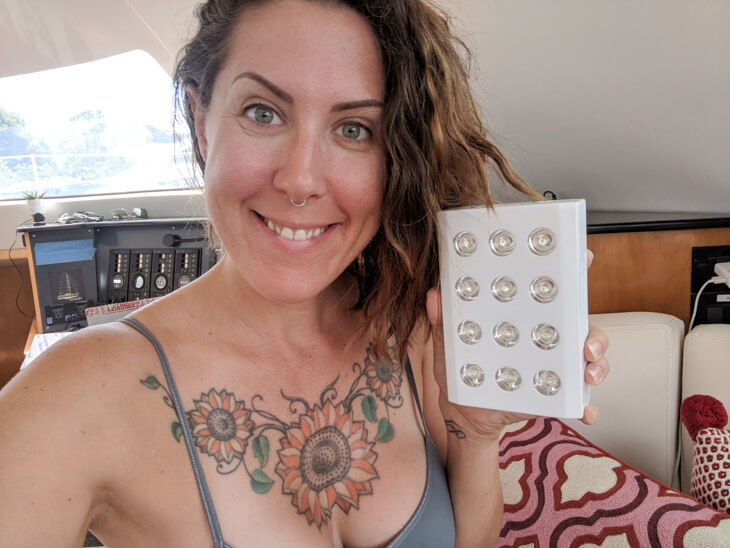
The Joovv Go is $295, which is the best value you’re going to find on dipping your toe into real, clinically-powerful light therapy.
>>>>>When you pickup a Joovv Go and use the code KETO at checkout, they’ll throw in a bonus gift!<<<<<
I mentioned earlier why I prefer Joovv’s modular design when it comes to full-body therapy. Kind of like LEGO blocks, you can start with one smaller device and build out a larger system over time, in just about any space in your home. Joovv’s functionality appears to be the most adaptive, customizable light therapy experience you can find. With others, it’s more of a “one and done”, which I’ll explain in more detail below.
GembaRed sells a bargain basement, 12” x 12” square panel called a GembaRed Rex for just $379.
Red Therapy Co. and their line of RedRush products are similar single-panel devices selling for under $800.
The difference in price between a GembaRed, RedRush, and a Joovv reflects the difference in quality and effectiveness. For example, a GembaRed Rex is made of plastic, whereas Joovv and RedRush devices are made with much sturdier hardware. A GembaRed Rex also doesn’t have any cooling fans like a Joovv or RedRush.
RedRush devices look similar to Joovvs and may even be a direct imitator, but the RedRush products are much smaller than most Joovvs, and you can’t combine them together in the same way. RedRush devices also deliver far less power and energy than Joovv’s products of similar and larger size, according to all the independent testing.
One big concern I have about RedRush is transparency. I mentioned how it’s important to verify power measurements. In the independent laboratory testing, the RedRush devices consistently measure with far less power and irradiance than Red Therapy Co. has been advertising. Once again, it pays to trust the data before the ad headline.
Platinum LED also makes a range of panel lights in different sizes. This company has actually been in the grow light business for years making lights for plants (yes, especially marijuana). In my experience, many health-conscious consumers have avoided Platinum LED to this point because they don’t have many professional endorsements or testimonials from users, and their history is mostly in cannabis. They’re attempting to make a bit of an awkward jump to the consumer health world, and it’s yet to be seen if it pays off. And as I mentioned before, Platinum does not register their devices with FDA, so like Forrest Gump said, it’s like buying a box of chocolates. You simply don’t know what you’re gonna’ get.
Joovv is Top of the Line for In-Home Light Therapy
After doing my homework and reading A LOT about light therapy and different brands, I think it’s pretty clear that Joovv remains the industry standard for in-home light therapy, whether it’s a handheld device like the Joovv Go or one of their larger, full-body systems like the Joovv Elite (their largest).
Larger, LED devices work a lot better than smaller handheld wands or wearable bands, and based on the data, it’s clear that Joovv makes the best LED light therapy products.
Joovv devices also cost more than their less-effective alternatives, and that shouldn’t come as a surprise. You usually get what you pay for, and in the case of light therapy, it’s sad that you often get what you DON’T pay for with cheaper devices like RedRush and Platinum LED.
Here are some of the main reasons I think Joovv is the #1 brand in light therapy:
- The Biggest and Most Powerful: Joovv’s devices offer the largest sizes and most coverage in the industry, which is crucial to effective treatments. And unlike other brands, all their power data is backed up by independent diagnostic testing, so you know you’re getting what you expect. Plus, only Joovv has a modular design that allows you to buy a smaller device, and build out a bigger system over time by adding additional LED panels for more power and coverage.
- Trusted by Professionals: Joovv is the only brand I mentioned that’s widely used in pro sports, training, natural health, and skincare, by leading professionals. Big name endorsers aren’t everything, but I think it’s pretty telling that Joovv gets the nod from almost every key thought leader today, where the stakes are high and results matter most.
- Joovv Devices Used in Research: I also trust Joovv more than other light therapy brands because they’re the only company investing in clinical research and trials. Joovv lets researchers around the world use their most powerful devices to test aspects of light therapy. Currently, Joovv is engaged in clinical trials that look at hormone health, brain function, athletic performance, and even light therapy for people on a keto diet, which I find particularly compelling.
- R&D and Education: Another factor in Joovv’s favor is that they blazed the trail in consumer light therapy and have remained on the cutting-edge, while a lot of these other brands arose specifically as Joovv imitators, many just trying to grab a portion of the lower-cost market. Unlike manufacturers of low-cost devices, Joovv has a robust R&D arm that helps them continuously improve their products (and the industry as a whole). Joovv is also the only brand that’s been seriously driving education and awareness about light therapy with the public.
I hope this post helps you sort through all your light therapy options. If effective treatments and natural health benefits are your goal, do your homework, and don’t trust the tiny devices shouting the loudest online about how powerful they are. The cheapest devices are the cheapest devices. Period. End of story.
If you’re interested in taking the next step with light therapy, you can check out all of Joovv’s options right here. And remember to use the promo code KETO at checkout. That will get you a nice bonus offer.
One Final Tip: Consistency Counts for a lot in Light Therapy!
No matter which device you pick, it pays to be consistent with your treatments. Results are better with daily or near-daily use. One treatment may have some acute effects, but you’re not likely to see systemic effects for skin, sleep, and inflammation unless you’re using your device regularly.
Scientific Sources:
[1] Wunsch A and Matuschka K. A Controlled Trial to Determine the Efficacy of Red and Near-Infrared Light Treatment in Patient Satisfaction, Reduction of Fine Lines, Wrinkles, Skin Roughness, and Intradermal Collagen Density Increase. Photomedicine and Laser Surgery. Feb 2014; 32(2): 93-100.
[2] Kim HK, Choi JH. Effects of radiofrequency, electroacupuncture, and low-level laser therapy on the wrinkles and moisture content of the forehead, eyes, and cheek. Journal of Physical Therapy Science. 2017 February.
[3] Alsharnoubi J, Shoukry K, et al. Evaluation of scars in children after treatment with low-level laser. Lasers in Medical Science.
[4] Hamblin M. “Mechanisms and applications of the anti-inflammatory effects of photobiomodulation”. AIMS Biophys. 2017; 4(3): 337–361. doi: 10.3934/biophy.2017.3.337
[5] Langella L., Casalechi H., Tomazoni S., Johnson D., Albertini R., Pallotta R., Marcos R., de Carvalho P., Leal-Junior E., “Photobiomodulation therapy (PBMT) on acute pain and inflammation in patients who underwent total hip arthroplasty-a randomized, triple-blind, placebo-controlled clinical trial”. Lasers Med Sci. 2018. Jun 16. doi: 10.1007/s10103-018-2558-x.
[6] Leal-Junior EC, Vanin AA, et al. Effect of phototherapy (low-level laser therapy and light-emitting diode therapy) on exercise performance and markers of exercise recovery: a systematic review with meta-analysis. Lasers in Medical Science. 2015 Feb;30(2):925-39.
[7] Dellagrana RA, Rossato M, et al. Photobiomodulation Therapy on Physiological and Performance Parameters During Running Tests: Dose-Response Effects. Journal of Strength and Conditioning Research. 2018 Oct;32(10):2807-2815.
[8] dos Santos Maciel T, Muñoz I, et al. Phototherapy effect on the muscular activity of regular physical activity practitioners. Lasers in Medical Science. 2014 May;29(3):1145-52.
[9] Leal Junior EC, Lopes-Martins RA, Dalan F, et al. Effect of 655-nm low-level laser therapy on exercise-induced skeletal muscle fatigue in humans. Photomed Laser Surg. 2008 Oct;26(5):419-24.
[10] Borges LS, et al. Light-emitting diode phototherapy improves muscle recovery after a damaging exercise. Lasers in Medical Science. 2014 May;29(3):1139-44.
[11] Paolillo FR, Corazza AV, et al. Phototherapy during treadmill training improves quadriceps performance in postmenopausal women. Climacteric. 2014 Jun;17(3):285-93.
[12] Bjordal JM, et al. A systematic review of low level laser therapy with location-specific doses for pain from chronic joint disorders. Australian Journal of Physiotherapy. 2003;49(2):107-16.
[13] Brosseau L, Welch V, et al. Low level laser therapy for osteoarthritis and rheumatoid arthritis: a meta-analysis. The Journal of Rheumatology. Aug 2000; 27(8): 1961-9.
[14] Paolillo AR, Paolillo FR, et al. Synergic effects of ultrasound and laser on the pain relief in women with hand osteoarthritis. Lasers in Medical Science. Jan 2015; 30(1): 279-86.
[15] de Paula Gomes CAF, et al. Incorporation of photobiomodulation therapy into a therapeutic exercise program for knee osteoarthritis: A placebo-controlled, randomized, clinical trial. 2018 Oct;50(8):819-828.
[16] Morita T., Tokura H. “ Effects of lights of different color temperature on the nocturnal changes in core temperature and melatonin in humans” Journal of Physiological Anthropology. 1996, September; 15(5):243-246.
[17] Loeb LM, Amorim RP, et al. “Botulinum toxin A (BT-A) versus low-level laser therapy (LLLT) in chronic migraine treatment: a comparison.” Arquivos de neuro-psiquiatria. 2018 Oct;76(10):663-667.
[18] Naeser MA, Zafonte R, et al. “Significant improvements in cognitive performance post-transcranial, red/near-infrared light-emitting diode treatments in chronic, mild traumatic brain injury: open-protocol study.” Journal of Neurotrauma. 2014 Jun 1;31(11):1008-17.
[19] Höfling DB, Chavantes MC, et al. Low-level laser therapy in chronic autoimmune thyroiditis: a pilot study. Lasers in Surgery and Medicine. 2010 Aug; 42(6): 589-96.
[20] Baek WY, Byun IH, et al. The effect of light-emitting diode (590/830 nm)-based low-level laser therapy on posttraumatic edema of facial bone fracture patients. Journal of Cranio-Maxillofacial Surgery. 2017 November.
[21] Zhu CT, Li T, et al. Beneficial effects of low-level laser irradiation on senile osteoporosis in rats. European Review for Medical and Pharmacological Sciences. 2017 November.
[22] Barrett DW, et al. Transcranial infrared laser stimulation produces beneficial cognitive and emotional effects in humans. 2013 Jan 29;230:13-23.
[23] Koev K, Avramov L, et al. Five-year follow-up of low-level laser therapy (LLLT) in patients with age-related macular degeneration (AMD). Journal of Physics. 2018.
[24] Silveira PC, Ferreira KB, et al. Effect of Low-Power Laser (LPL) and Light-Emitting Diode (LED) on Inflammatory Response in Burn Wound Healing. Inflammation. 2016 Aug.
[25] das Neves MF, Dos Reis MC, de Andrade EA, et al. Effects of low-level laser therapy (LLLT 808 nm) on lower limb spastic muscle activity in chronic stroke patients. Lasers in Medical Science. 2016 Sep;31(7):1293-300.
Hi! I'm Leanne (RHN FBCS)
a Functional Medicine Practitioner, host of the Healthful Pursuit Podcast, and best-selling author of The Keto Diet & Keto for Women. I want to live in a world where every woman has access to knowledge to better her health.
